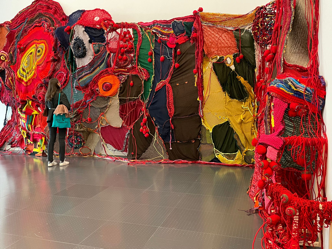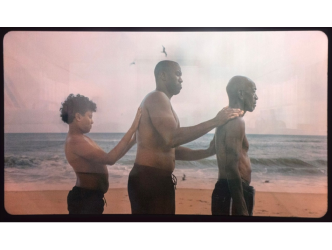Hotly anticipated
The exhibition dedicated to surrealism, which celebrates 100 years of the movement at the Centre Pompidou in Paris, is possibly the most hotly anticipated museum event of the season in France. Opening on 4 September, the show is at once fabulous and disappointing. Fabulous because it allows us to see extraordinary paintings in a stunning setting. This major display of force features 500 items. But it’s disappointing because it places on an equal footing the very beautiful and breathtaking pre-war years – it was in 1924 that the movement was ushered in by André Breton – and a postwar “tail end” populated by artists who would never be as extraordinary as the inventors of this avant-garde.
Labyrinth
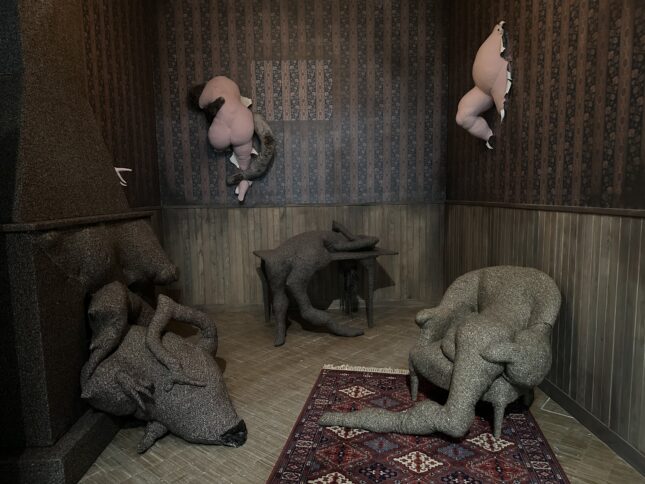
Dorothea Tanning
The exhibition, conceived along the lines of themes that range from an obsession with the mother to a fascination with Alice in Wonderland (“All those who have a sense of revolt will recognize in Lewis Carroll our most important master in the school for skivers,” wrote André Breton), is designed in the form of a labyrinth.
Son of a police officer
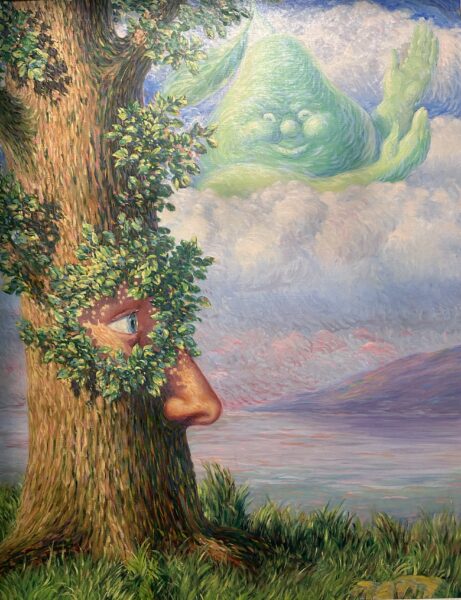
René Margitte
At the centre of these interlaced images and ideas, in a dramatic setting, the movement’s holy bible is presented: the manuscript that laid the foundations for this “ideology”. The “Manifeste du surréalisme” was written in 1924 by a former medical student, son of a police officer, who would unite the young rebels who were writing and painting. His name was André Breton (1896-1966). He had all the qualities for creating a revolutionary movement.
Sigmund Freud
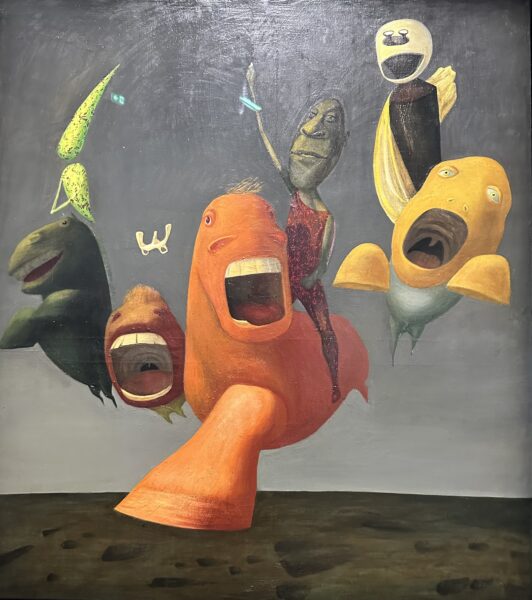
Judith Reigl
He had a freedom of self-expression, which was of course empathetic yet unique, an extraordinary eye (he bought for example the canvas of Picasso’s Demoiselles d’Avignon on behalf of the couturier Jacques Doucet), an iconoclastic spirit, and he had nerve (he didn’t hesitate to go and meet Sigmund Freud in Vienna). He was also a leader of men, who came up with rules and rituals.
Didier Ottinger
The objective of this revolutionary movement was to “create a crisis of consciousness”. “Surrealism is not a dogma. And yet Breton held the reins from 1924 until his death in 1966,” gushes the co-curator of the exhibition, Didier Ottinger (see here another interview of Didier Ottinger). The poet developed a wide range of principles that foreshadowed not only the future practices of artists but also the society of today.
Miro and Dali
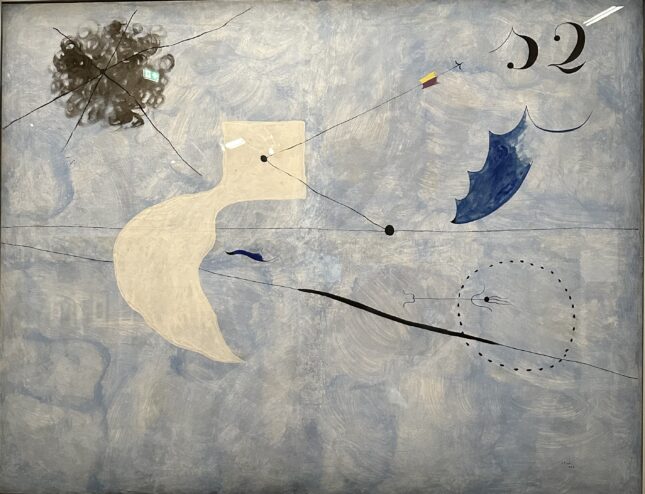
Joan Miro
This is the case for the importance of dream and the unconscious, to which a section is dedicated in Beaubourg. We find here for example the Miro from 1925, “Siesta”, composed of a sky-blue background featuring various forms and outlines, alongside “Dream Caused by the Flight of a Bee Around a Pomegranate a Second Before Awakening” by Salvador Dali in 1944.
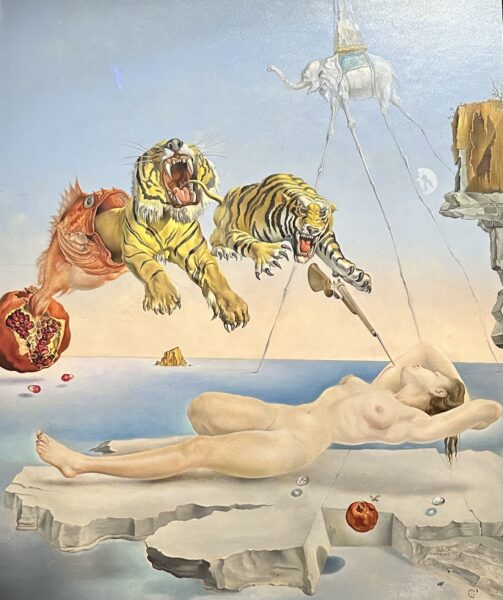
Salvador Dali
It depicts a nude woman in a hyperrealist spirit, offered up to two leaping tigers. “Surrealism is within reach of all those who are unconscious,” proclaimed these new followers of Freud and artificial paradises.
To appreciate is to support.
To support is to donate.
Support JB Reports by becoming a sustaining Patron with a recurring or a spontaneous donation.
Carrington and Tanning
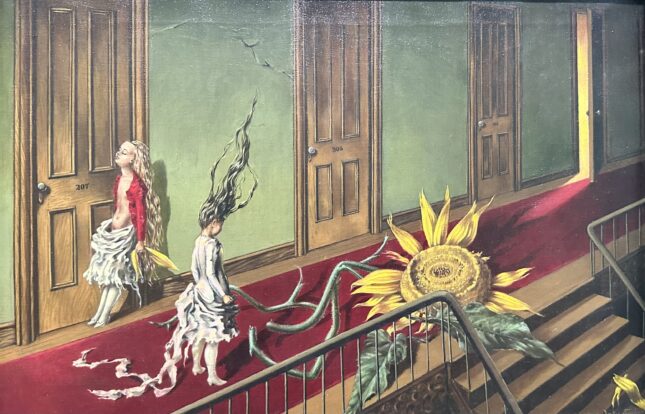
Dorothea Tanning
Another innovation was that it treated women artists as equals. It took time for posterity to do the same. From Leonora Carrington (1917-2011) to Dorothea Tanning (1910-2012) (See here a report about Leonor Fini and her market) here they make their grand entrance onto the French scene with works that were often more chiselled and of more modest in size than their male counterparts.
Ithell Colquhoun
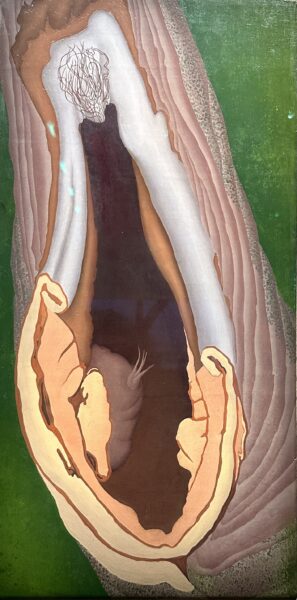
Ithell Colquhoun
The great discovery of the exhibition is the stunning British painter Ithell Colquhoun (1906-1988). She produced anthropomorphic landscapes such as “Tree Anatomy” from 1942 whose cavity resembles the female genitals.
Wifredo Lam
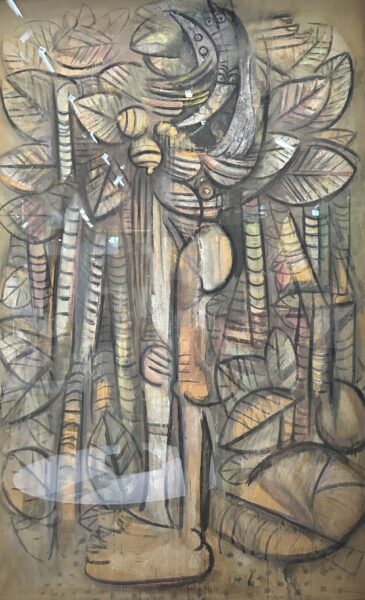
Wifredo Lam
Surrealists also loved distant cultures, complete with the more magical parts they contained. The Hopi sculptures made by Native Americans therefore had their place in the surrealist pantheon, along with the interlaced forms inspired by African deities by Cuban artist Wifredo Lam (1902-1982).
Max Ernst
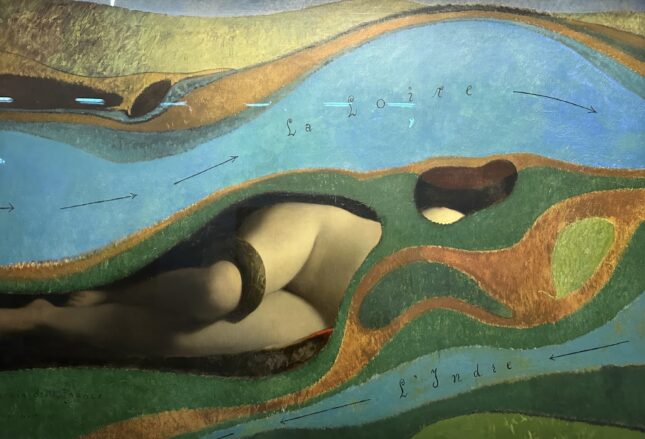
Max Ernst
In the exhibition, the paintings by Max Ernst are some of the most numerous and also the most exceptional. See his “Attirement of the Bride” from 1940 showing a sublime female figure half dressed in a giant orange fur cloak. Ernst was excluded from the movement in 1954 because he accepted a medal in Venise. Too bourgeois…
L’Empire des lumières
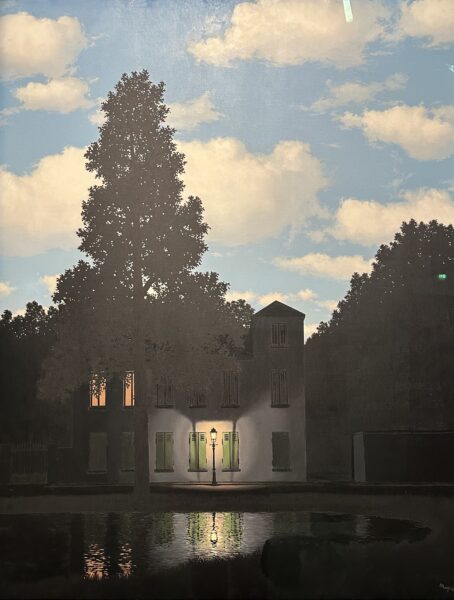
René Magritte
The same went for Magritte, who is ultra present in Beaubourg with, among other works, his “Empire des lumières” from Belgium’s Royal Museums. The Belgian artist produced no less than eighteen versions of this urban scene that juxtaposes day and night (See the report about the market of L’Empire des Lumières here). And Magritte would also be excluded from the movement because Paul Eluard and André Breton could not bear the fact that his wife, Georgette, wore a necklace with a cross. Being anti-clerical was one of the cornerstones of surrealism.
Expensive Magritte
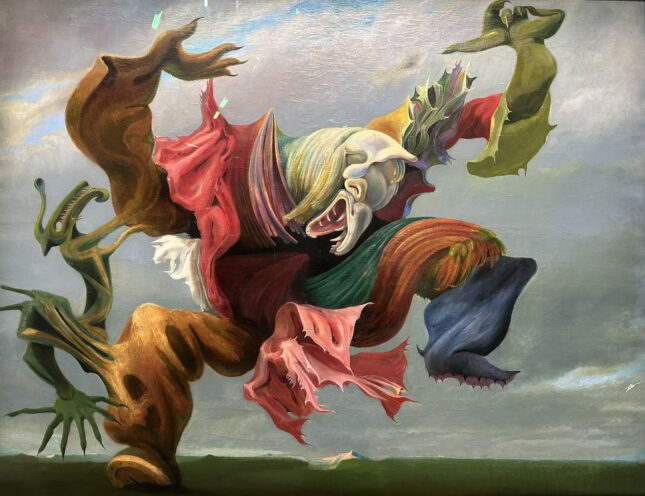
Max Ernst
As for Magritte’s business sense, it would prompt Marcel Duchamp to say: “there are Magrittes in expensive, in price hikes, in black and in colour. (Des Magritte en cher, en hausse, en noir et en couleur)”. We lament the fact that the same Duchamp (see here a report about Jean Jacques Lebel speaking about Duchamp), who was a major player in the surrealist vision and an ambassador for the movement in the United States, is only present in the form of a few objects with erotic tendencies.
Only one Picabia

Francis Picabia
We also lament the fact that his friend, iconoclastic painter Francis Picabia (1879-1953) (see here and here reports about Picabia), would only be represented by one of his canvases dating from 1925, depicting a deliberately monstrous looking couple, locked in an embrace. Of course Picabia was not an affiliated member of the group, but this mischievous individual who didn’t care much for anything apart from women, painting and cars, embodied better than anyone the spirit of the group.
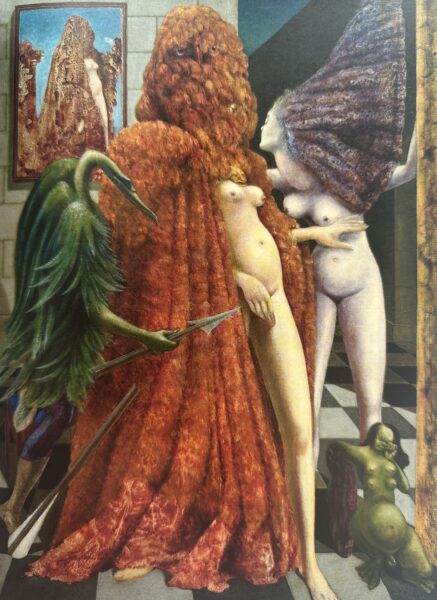
Max Ernst
Didn’t the surrealists proclaim in one of their tracts: “Unbutton your brain as often as your fly. (Déboutonnez votre cerveau aussi souvent que votre braguette)”?
Until 13 January 2025. www.centrepompidou.fr/fr/
Support independent news on art.
Your contribution : Make a monthly commitment to support JB Reports or a one off contribution as and when you feel like it. Choose the option that suits you best.
Need to cancel a recurring donation? Please go here.
The donation is considered to be a subscription for a fee set by the donor and for a duration also set by the donor.

